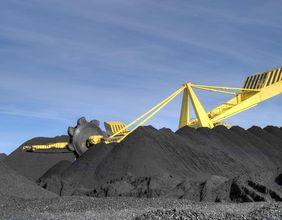RBA’s sense of policy responses is quite unique to other Central Bankers – its legacy of maintaining deep-thought, patience-reflecting, acutely-targeted policy responses – could be one of the reasons why Australia hasn’t had a severe recession in more than a millennial’s life to date.
And, the latest policy moves by the Australian Central Bank speaks volume of the above.
As the lender of the last resort has announced that it will be buying Australian sovereign debt, the front end of the Australian sovereign debt curve is set to witness large buying, thereby inducing compressed yields at short/front end of the curve.

The above figure clearly shows the large moves in the domestic sovereign debt market over the previous month. Short-term bonds have become cheaper as compared to a month ago, such as 3-year Australian Government Bond is yielding close to 0.8% from around 0.5% in the previous month.
RBA’s decision to target yield for the 3-year bond at around 0.25% would enable to relieve some pressure on the spreads between long-term rates and short-term rates, which is also quite crucial for banks.
It is also evident that the yields on the long-term debt have come down over the previous month as the flight to the safe-haven assets had intensified. However, there have been sell-offs across maturities in the sovereign debt markets (below figure).
As you can see in the below figure, the 10-year yield broke the level seen at the beginning of the year – indicating that investors are selling bonds across the maturity profiles – after two cash rate cuts.
Yields approaching higher levels also indicate that fixed-income investors must be booking profits since bond prices have had a decent upside run over the past – AU 10 year bond yield closed at 2.29% on 1 Jan 2019, which closed at 0.6% on 9 March 2020 – bond prices and yields move inversely.

25 Basis Points Rate Cut
Mr Lowe, in his speech, noted that the latest cash rate is induced to keep the Australian economy afloat amidst turbulent times. The move would improve the cash flows to households as well as Corporate Australia which includes dairy farmers to ASX-listed blue-chip companies.
As any action has positive and negative outcomes, the bank believes that interest rate cut is motivated by the fact that the larger community is set to benefit by this action.
RBA’s Board agreed that interest rate hikes are unlikely until there is visibility on the bank’s mandate, which is full employment and sustainable inflation between 2% to 3%, thus – interest rates are likely to remain at existing level for an extended period of time.
Flashback to taper tantrum 2013. An extended period of low interest rates would aid to accumulate cash that could be used when interest-rate hikes come in to play, which will increase debt-servicing costs – thereby posing default-risks by stressed areas in an economy.
If oil prices were to remain at lower levels, it is likely to create deflationary pressures, but an economic recovery could create a floor for interest-rate hikes as economic activity gathers momentum, thus, creating inflationary pressures and risks to much-awaited full employment.
CBA Announced Interest Rate Cuts, Others Likely To Follow
After the RBA announced its decision, Commonwealth Bank (ASX:CBA) reduced interest rate on all cash-linked small business loans by 1%. It has also lowered the interest rates on one, two and three-year fixed home loans by 0.70%. And, the bank has increased interest rate on 12-month term deposits by 0.60% to 1.70% per annum.
CBA noted that the change to home loan repayment would reduce interest payments of households by $3.6 billion. It is likely that the other major lenders would introduce respective efforts soon.
3-Year AGB Yield Target To Benefit Corporate Australia Among Others
This move by the RBA reflects ‘targeted-response’ attribute. The bank has decided to maintain 3-year Australian Government Bond yield at 0.25%, which would see the bank buying these bonds on-market via regular auctions.
RBA chose 3-year rate because the said rate is used to benchmark the funding costs (in addition to margin). If you dig balance sheets of companies, you will notice that companies mainly, as a primary debt, have three-year bank loan facilities, revolving credit facilities etc., which are used to fund business operations, including investment decisions of a firm.
This policy response also echoes the RBA’s deep-thought and patience-reflecting attributes. Mr Lowe was of a view that the consensus would see this as quantitative easing, and his contrary argument appears reasonable.
He infact stated that as nothing has been quantified on how much the bank would buy, unlike the other Central Banks. RBA intends to keep buying bonds until progress is visible on its mandate, and it expects to stop buying when interest-rate hikes arrive – again to keep its mandate intact.
Related: Should you Expect Credit Events by Corporate Australia?
Lenders Get $90 Billion Boost
RBA has undertaken this measure to boost business credit flow by the banking system, specifically SME businesses. Since coronavirus is hurting the real economy in the first place, small and medium businesses are exposed to the risks, including severe damages to cash flows.
Australia has a large part of businesses in the SMEs space. As per ABS, in 2018-19, out of the ~2.37 million business operating in the country – close to 93% of businesses had a turnover of less than $10 million. So, if SMEs were to be ignored, the pace of economic recovery could not be effective as it could be when SMEs are supported.
This facility by the bank is set to fund ADIs to the tune of at least $90 billion who will be able to borrow 3% of their current outstanding credit. The facility would be available until September this year. In addition, the lenders could have more funds from the RBA if business credit is increased this year - this facility would be available until March next year.
10 Bps Support To ESAs – Which Mainly Are Adis, Ccps – Or Banks
Overnight balances of Exchange Settlement Accounts (ESAs) with the RBA earn 25bps lower than the cash rate. Since cash rate is 25 bps – the bank has decided to pay 10 bps on the overnight balances of ESAs. The bank expects an increase in these balances as a result of the above measures and earning no overnight interest would increase the cost for the lenders, thus a 10 bps overnight rate would incentivise lenders.
Besides, these measures
The RBA has been conducting money market operations over the past the week to maintain liquidity in the money markets. It intends to the continue the liquidity operations in one-month and three-month repos and a weekly liquidity injection in 6-month maturity profile or more.
Bank Bill Swap Rate could be a proxy to money market instruments, below figure shows how it has fared recently.
Bottomline
You can’t really clap with one palm, and you need both of your palms to do it. Likewise, the desired economic prosperity is fueled by monetary as well as fiscal measures. In the next part of our policy response series, we will emphasise on how PM’s team is making unprecedented moves to tackle unprecedented times. Stay tuned, and don’t forget to share this with your friends via sharing options at the top.










